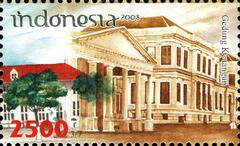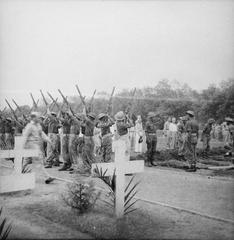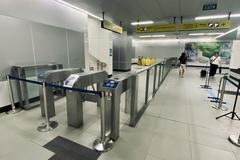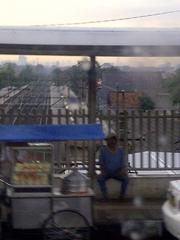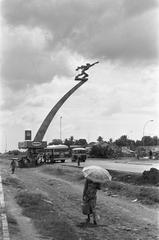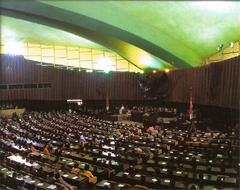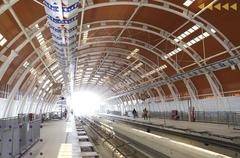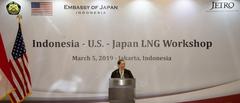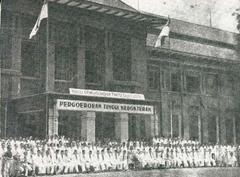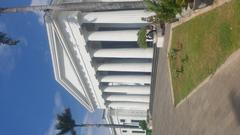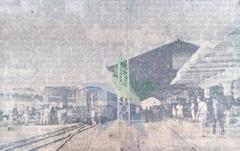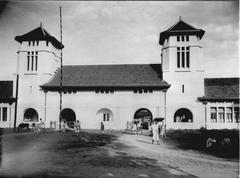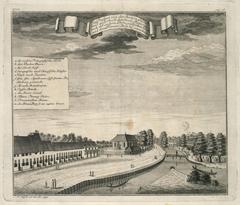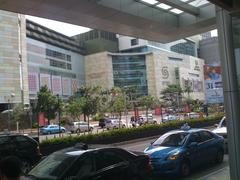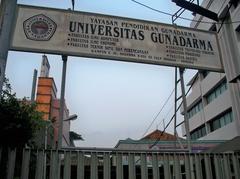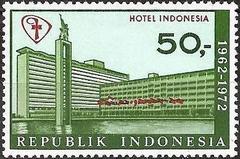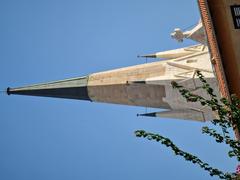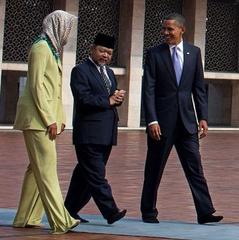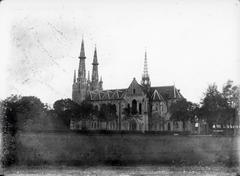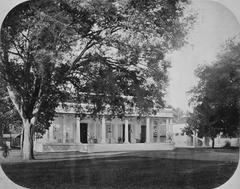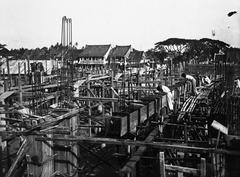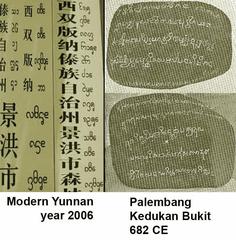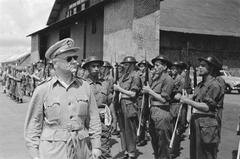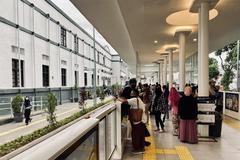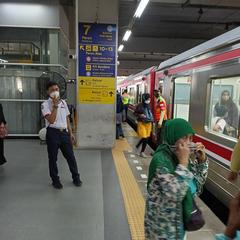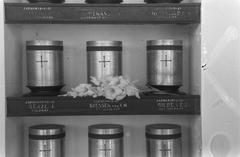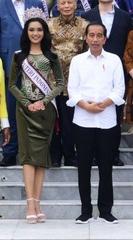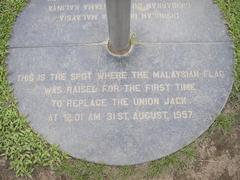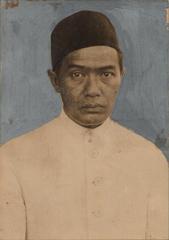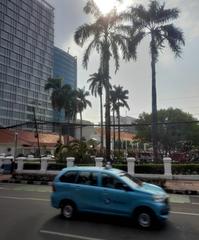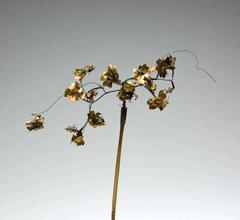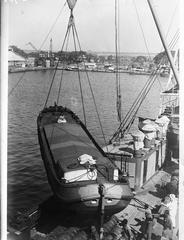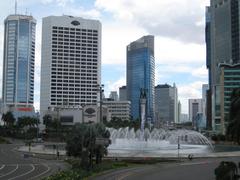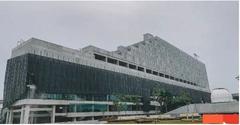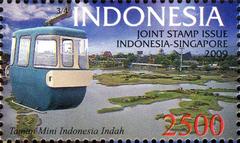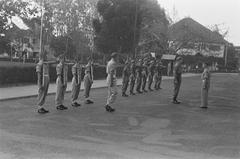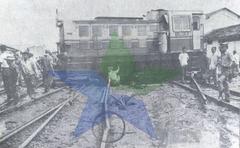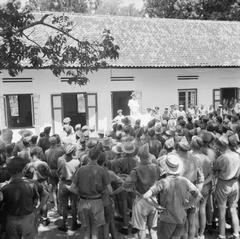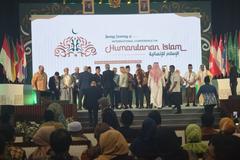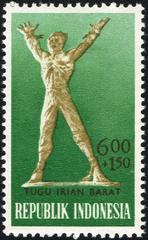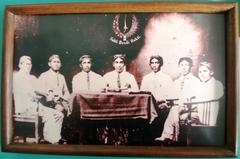Wayang Museum Jakarta: Comprehensive Guide to Visiting Hours, Tickets, and Cultural Experiences
Date: 14/06/2025
Introduction: The Wayang Museum’s Role in Jakarta’s Heritage
Located in the heart of Jakarta’s historic Kota Tua, the Wayang Museum stands as a vital institution dedicated to preserving Indonesia’s legendary puppetry arts—collectively known as wayang. Its Neo-Renaissance building, with origins as a 17th-century Dutch church, is itself a piece of living history, reflecting centuries of colonial and cultural transformation in Jakarta (Official Wayang Museum Website; Wikipedia).
Wayang, honored by UNESCO as a “Masterpiece of the Oral and Intangible Heritage of Humanity,” is central to Indonesia’s cultural identity. The museum not only exhibits thousands of traditional puppets from across the archipelago and the world, but also serves as a vibrant center for performances, workshops, and cultural education. Whether you are a cultural enthusiast, traveler, or local resident, a visit to the Wayang Museum offers a window into Indonesia’s intangible heritage, enhanced by interactive technology and inclusive facilities.
For up-to-date visitor details, including opening hours, tickets, and event schedules, consult the official Wayang Museum Website, Jakarta Tourism Official Site, or UNESCO Intangible Cultural Heritage.
Table of Contents
- Introduction
- Historical Background
- Visiting Hours and Tickets
- Getting There
- Accessibility and Visitor Amenities
- Collections and Exhibits
- Special Events and Performances
- Educational Programs and Workshops
- Nearby Attractions
- Visitor Tips and FAQs
- Conclusion and Call to Action
- References
Historical Background
The Wayang Museum’s building has transformed through several historic roles. Originally constructed in 1640 as “De Oude Hollandsche Kerk” by the Dutch East India Company, it was rebuilt after an earthquake in 1808 and later served commercial purposes. In 1939, it became the “Oude Bataviasche Museum.” Post-independence, the site evolved into the Wayang Museum, officially inaugurated in 1975, following growing recognition of wayang’s cultural significance (Explore Sunda).
Today, the museum safeguards over 6,000 puppets and related artifacts, representing the world’s largest and most diverse wayang collections.
Visiting Hours and Tickets
- Opening Hours: Tuesday to Sunday, 9:00 AM – 4:00 PM (some areas may close earlier for maintenance).
- Closed: Mondays and national public holidays.
- Admission Fees:
- Adults: IDR 10,000 (weekdays), IDR 15,000 (weekends)
- Children/Students: IDR 5,000–10,000 (confirm on-site)
- Special rates for groups and school visits are available upon request (SilverKris; Holidify)
Tickets can be purchased at the museum or online through official channels. For live performances, workshops, or guided tours, advance booking is recommended.
Getting There
The museum’s central Kota Tua location makes it easily accessible:
- By TransJakarta Bus: Disembark at Kota Tua terminal.
- By Commuter Line (KRL): Alight at Kota Station, a short walk to the museum.
- By Taxi or Rideshare: Enter “Museum Wayang” or “Jalan Pintu Besar Utara No.27” as your destination.
Limited parking is available; public transport or walking is recommended, especially on weekends when the area is lively (Jakarta Walking Tour; Trip.com).
Accessibility and Visitor Amenities
Following recent renovations, the museum offers:
- Wheelchair-accessible ramps and entrances
- Accessible restrooms
- Clear bilingual signage (Bahasa Indonesia and English)
- Seating areas throughout the galleries
- Staff available to assist visitors with special needs
The museum is family-friendly, with interactive exhibits and child-oriented activities. Photography is generally allowed in most areas (without flash); restrictions apply during performances.
A well-curated museum shop offers wayang-themed souvenirs, books, and craft kits.
Collections and Exhibits
The museum’s comprehensive collection spans regional, historical, and international puppetry. Highlights include:
Indonesian Puppetry
- Wayang Kulit: Intricately carved leather shadow puppets from Java and Bali, used to perform Hindu epics like the Mahabharata and Ramayana.
- Wayang Golek: Three-dimensional wooden rod puppets, central to Sundanese culture.
- Wayang Klitik: Flat wooden puppets, often featured in East Javanese performances.
- Wayang Beber: Scroll-based storytelling puppets, an ancient and rare form.
- Wayang Janur and Wayang Rumput: Puppets made from coconut leaves and grass, reflecting folk creativity and ceremonial use.
- Wayang Revolusi: Puppets depicting Indonesia’s independence struggle.
Masks and Musical Instruments
- Topeng Masks: Used in dance-dramas from Cirebon, Bali, and Central Java.
- Gamelan Ensembles: Traditional musical instruments accompanying wayang performances.
- Blencong Lamps and Ceremonial Items: Supporting wayang’s ritual significance.
International Puppetry
- Puppets and dolls from China (Wayang Potehi), Thailand, India (Kathakali), Malaysia, Vietnam, Suriname, France, Germany, and more—demonstrating wayang’s global reach (Jakarta Travel Guide).
Rotating and Thematic Exhibits
The museum regularly rotates its displays to preserve delicate artifacts and showcase both Indonesian and international puppetry traditions. Notable permanent pieces include the 3-meter-tall statues of Gatotkaca and Pergiwa, and the tombstone of Jan Pieterszoon Coen in the museum garden (SilverKris).
Digital and Interactive Installations
Modern enhancements include:
- Virtual wayang performances
- Interactive gamelan orchestra displays
- Mixed reality rooms for immersive storytelling
Special Events and Performances
- Monthly Wayang Shows: Live wayang performances (“semalam suntuk” all-night shows) are held on the second, third, and fourth Sundays each month, starting in the evening.
- Special Performances: On national holidays and cultural festivals, guest dalangs and experimental shows (including AR/VR integration) are featured.
- Annual Indonesian Wayang Festival: A major event celebrating wayang innovation and tradition.
Check the official museum website or social media for updated performance schedules (Travelspromo).
Educational Programs and Workshops
- Puppet-Making Workshops: Hands-on sessions for all ages, teaching wayang design, carving, and painting.
- Wayang Goes to School: Outreach initiatives bringing wayang education to local schools.
- Digital Learning: Interactive games and apps introducing wayang stories and characters.
- Lectures and Seminars: Expert talks on wayang philosophy, history, and cultural symbolism.
- Guided Tours: Multilingual tours (including English) available by prior arrangement.
Nearby Attractions
Enhance your cultural itinerary by visiting:
- Fatahillah Square: The bustling heart of Kota Tua, lined with cafés and street performers.
- Jakarta History Museum (Museum Fatahillah): Chronicling the city’s colonial past.
- Fine Arts and Ceramics Museum: Showcasing Indonesian art and ceramics.
- Museum Bank Indonesia: Focused on the history of Indonesia’s economy.
- Cafe Batavia: A historic dining spot with colonial ambiance.
All attractions are within walking distance, making Kota Tua an ideal destination for a day of cultural exploration (Jakarta Tourism Official Site).
Visitor Tips and Frequently Asked Questions (FAQ)
Q: What are the museum’s hours?
A: Open Tuesday–Sunday, 9:00 AM–4:00 PM; closed Mondays and public holidays.
Q: How much are tickets?
A: Adults: IDR 10,000 (weekdays), IDR 15,000 (weekends); discounted rates for children and students.
Q: Are live performances suitable for children and non-Indonesian speakers?
A: Yes; shows are family-friendly. Some performances offer English narration or printed guides.
Q: Is Museum Wayang accessible for visitors with disabilities?
A: Yes; the museum features ramps, lifts, and accessible restrooms.
Q: Can I take photos in the museum?
A: Photography is allowed in most areas, except during live shows (no flash or video).
Q: How do I book a guided tour or workshop?
A: Contact the museum via the official website or in person; advance booking is recommended for groups.
Conclusion and Call to Action
Museum Wayang Jakarta is a cornerstone of Indonesia’s living heritage, blending centuries-old artistry with contemporary innovation. With its dynamic exhibitions, interactive technologies, inclusive facilities, and engaging programs, the museum provides deep insight into the narrative and spiritual traditions that continue to shape Indonesian society.
To maximize your visit:
- Check current schedules and book in advance for performances and workshops.
- Combine your trip with other Kota Tua attractions for a full cultural experience.
- Stay informed by following the museum’s social media and downloading the Audiala app for enhanced audio-guided tours and exclusive content.
Embrace the timeless art of wayang and witness its evolution—plan your visit to the Wayang Museum today!
References
- Official Wayang Museum Website
- Museum Wayang Jakarta: Visiting Hours, Tickets & Cultural Insights
- UNESCO Intangible Cultural Heritage – Wayang Puppet Theatre
- Jakarta Tourism Official Site
- Explore Sunda – Museum Wayang History
- SilverKris – Jakarta’s Museum Wayang Reopens
- Jakarta Walking Tour – Museum Wayang
- Jakarta Travel Guide – Visiting Museum Wayang
- Travelspromo – Museum Wayang Jakarta
